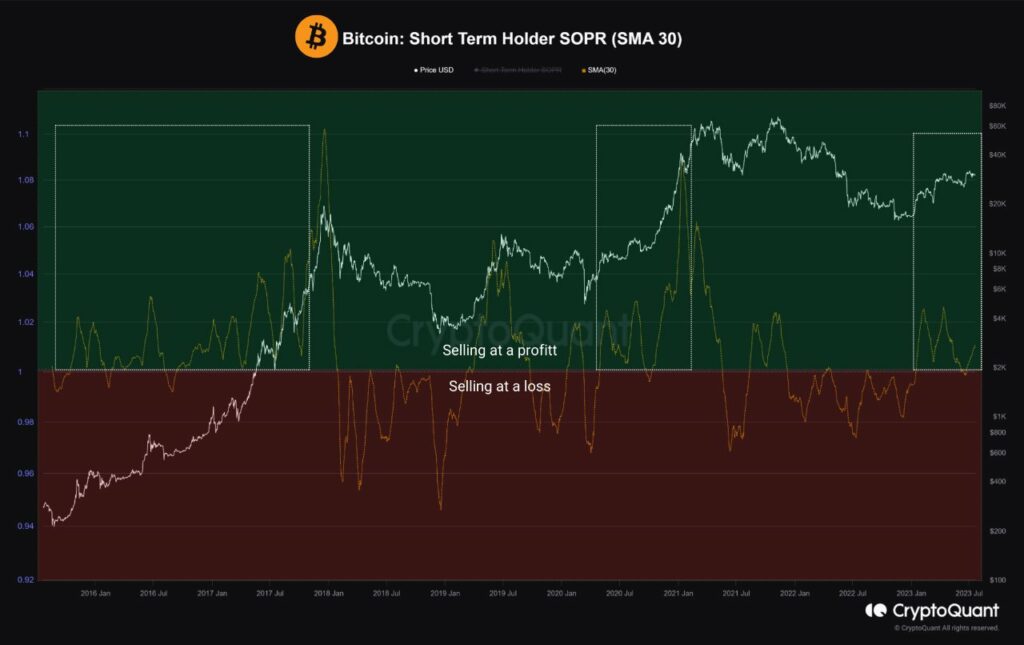Important facts:
-
The SOPR indicator is showing similar behavior to previous up cycles.
-
The exception was 2020, which was affected by the black swan of COVID-19.
Bitcoin (BTC) fell to a price near $29,000 for the first time in five weeks on Monday, indicating weak demand to continue its bullish trend. However, for the analyst, who identifies as data provider CryptoQuant’s “It_Tech_PL”, this drop is temporary and the price will return higher.
“All signs point to the market being in the early stages of the up cycle.” communicates. He insisted that unless there was a “black swan like a new virus or armed conflict,” he saw that scenario.
The term “black swan” in finance refers to an unpredictable and highly influential event that occurs suddenly and has a significant impact on the markets, such as the 2008 economic crisis or the 2020 COVID-19 pandemic.
The CryptoQuant analyst explained that in more detail sees Bitcoin in the early stages of the bull market due to its similarities to past cycles. And he specified that this is documented in the SOPR indicator (Ratio of production profits spent or benefit-to-effort ratio, said in Spanish).
The SOPR reflects the variation between the buying and selling price of currencies. And it finds that, on average, bitcoins are sold at a loss when their value is below 1, while when their value is above the current value, they are sold at a profit.
Given that The specialist pointed this out “Level 1 acts as resistance in a bear market, while serving as strong support in a bull market”. He added that this is the case in the past when measuring SOPR based on LTH and STH.
The LTH (long term owner) refers to coins stored for a long period of time – more than 155 days – and the STH (short-term owner) represents those that are stored for a shorter period of time.
The analyst stressed that in 2016 and 2020 After the LTH SOPR broke the 1 line, Bitcoin entered the initial phase of the bull market. However, he clarified that this was not the case when that figure was surpassed in 2019-2020, which is when the black swan of the COVID-19 pandemic appeared.
Similar to the behavior of LTH, Bitcoin entered a bull market phase after the STH SOPR surpassed the 1 mark in 2016 and 2020. But when it crossed that line in 2019 against the aforementioned black swan, that stage had not yet been reached, the analyst said.

Analysts assume that Bitcoin would overcome its current setback
The CryptoQuant specialist now summarized this: If bitcoin is above the 1-line of LTH and STH SOPR, it would be at the beginning of its bullish phase, as long as no black swan occurs, discouraging investor demand. Therefore, it suggests that the current price decline is a normal move within an upside pattern.
Likewise the market analyst Rekt Capital manifested The $29,255 acted as resistance for Bitcoin in March, April and May. And he added that the market is now “trying to turn that level into new support” for the first time in 2023.
The resistances (zones with high prices due to more supply than demand) tend to become supports (zones with minimum prices due to more supply than supply) as the market gains momentum.
The fact that this is happening shows it “BTC is well positioned technically” to continue its uptrend After testing support, Rekt Capital, which has been talking about it for the past three weeks, noted that a retracement to $29,000 is on the cards.
However, some specialists reported by CriptoNoticias, such as Florian Grummes, believe that if BTC continues its decline to lower levels, it would not return to an uptrend in the near future. Hence the market is waiting to see where it will form its new mainstay.